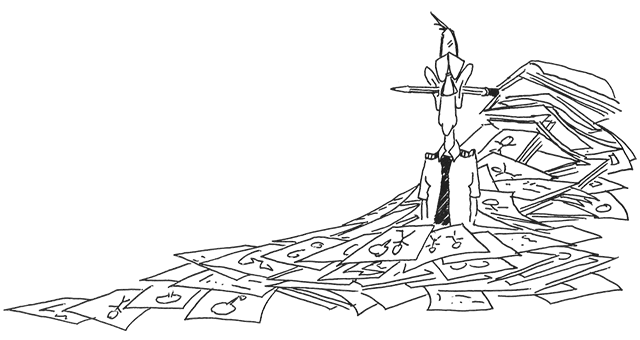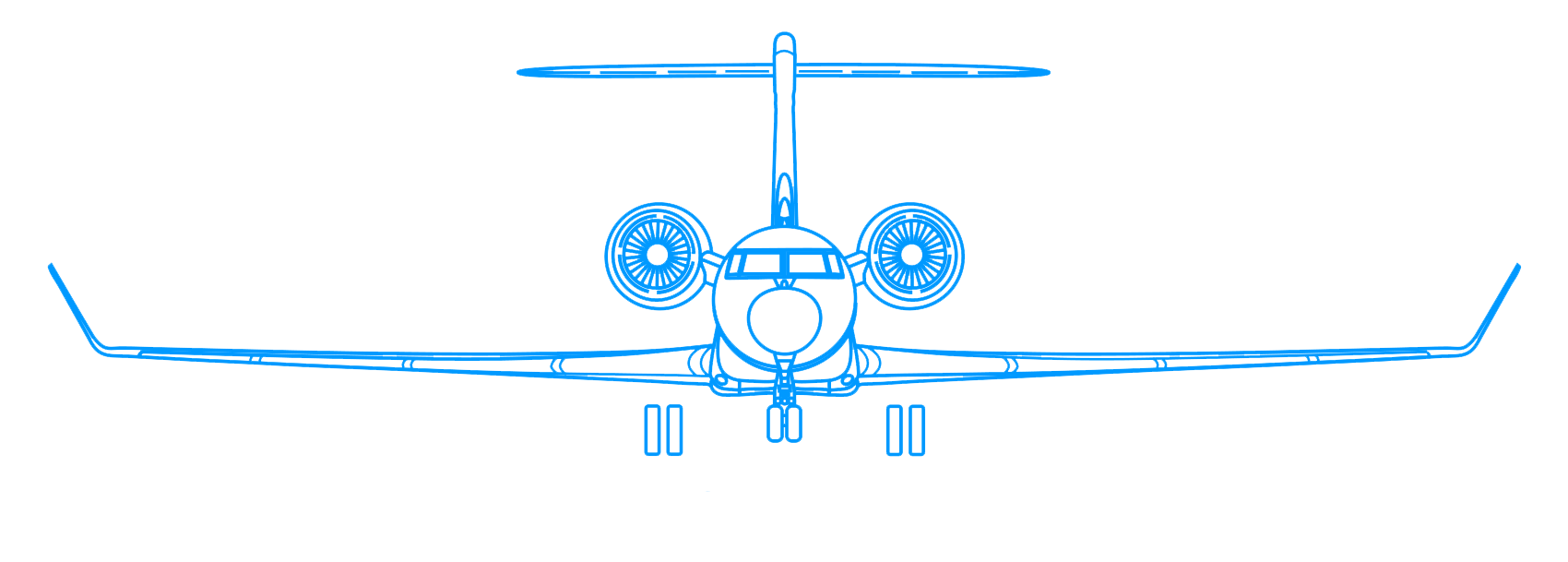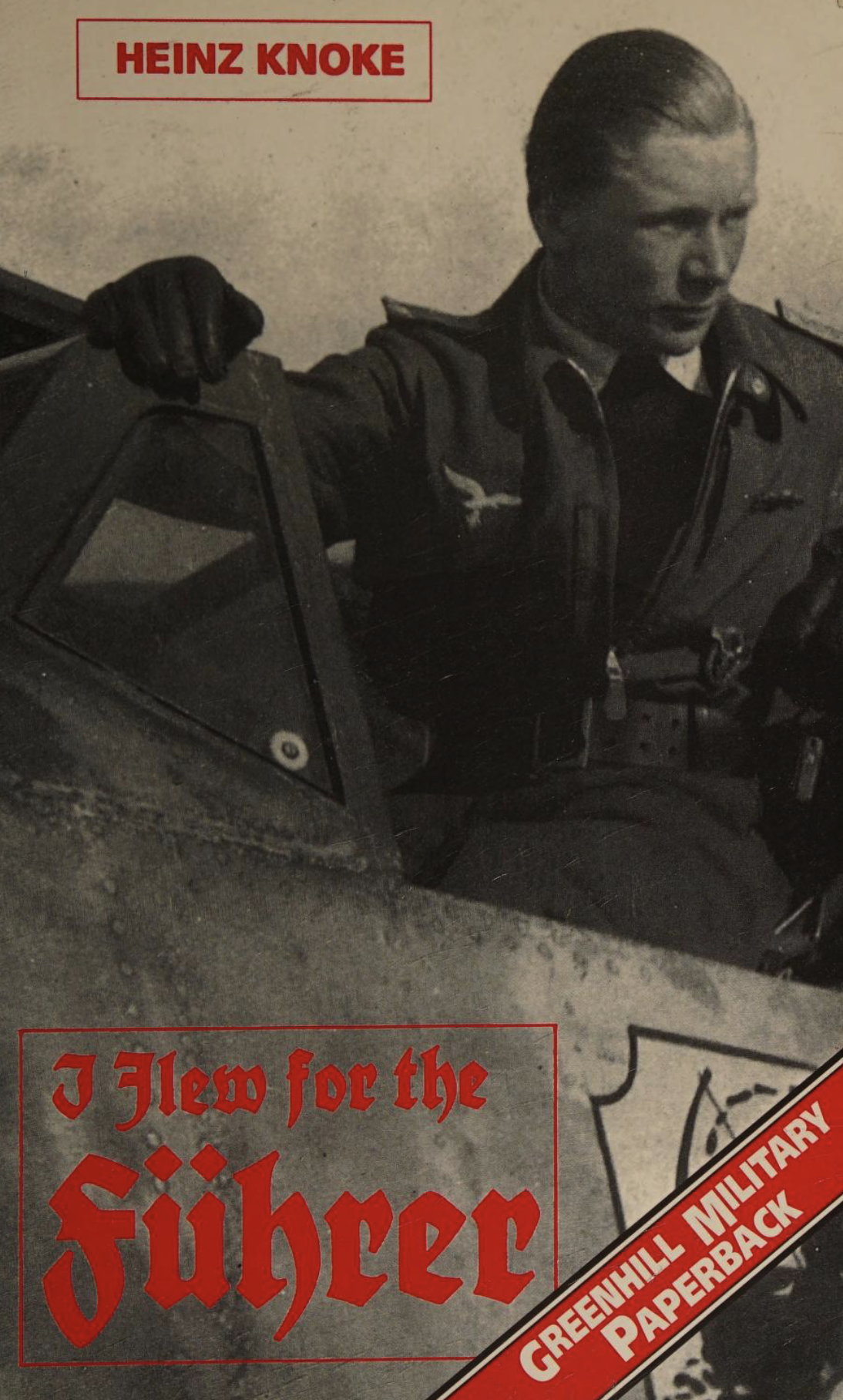If, like me, you have wondered if there were any Nazi fighter pilots, this book is for you. I’ve read stories of many World War II German fighter pilots and they mostly read the same. They were devoted to Germany, aviation, but refused to join the Nazi party. Some said joining was discouraged in the ranks of the Luftwaffe. I’ve often wondered how true that was. “I Flew for the Führer” by Heinz Knoke breaks that mold. He was a proud member of the Nazi party and a devoted fan of Adolf Hitler, almost to the end. As the end approached, he shifted his allegiance from pro-Nazi to anti-Bolshevik. Knoke was credited with 52 victories over allied aircraft, was shot down a number of times, and lived to tell the tale.
— James Albright

Updated:
2024-08-12
The book was written by Knoke is his native German and first published in 1953. It was later translated into English by an officer in the Royal Canadian Air Force who served during the occupation of Germany after the war. As a result, the English words are a mixture of German syntax and a Canadian’s interpretation. I’ve left the sentence structure as is in the excerpts to follow.
The book is a collection of entries from Knoke’s diary, starting in 1931 when young Heinz joined the Association of Boy Scouts, the Pfadfinderbund. The scouts were declared illegal and then incorporated into the Hitler Youth. His thoughts about the organization were instructive:
1935. The Hitler Youth was like every other Nazi organization. It eventually became intolerable, because of failure to apply correctly in practice the fundamental principles of National Socialism.
p. 15
If you’ve ever wondered what seduced an entire nation into this ideology, Knoke captures that well:
Summer, 1939. Want poverty, unemployment? [ . . . ] German populations all over Europe are reaching hands out to Hitler. It is the same wherever we go. At the National Party Rally at Nuremberg, or at the local village harvest festivals on the Bückeberg, only five miles from Hamelin [where Knoke grew up], I am only of out of many millions of enthusiastic young people who have absolute faith in Hitler and dedicate ourselves to him without reservations.
p. 17
Of course, a book about a fighter pilot should be about flying. Knoke’s description of his first solo would aptly describe my experience:
2nd April, 1940. My first solo landing cannot be described as a good one. Nor were the next four I made much better. But at least the wheels did not come off.
p. 25
Knoke’s description of his first aerial combat experiences were not what you’ve probably read from many such memoirs. Knoke spends very little time regretting pulling the trigger or watching adversaries plunge to their deaths. He does, however, do a good job of describing the loss of fallen comrades and the loneliness of being surrounded by comrades you didn’t want to establish friendships with, because the friendships would be fleeting.
My favorite passage about aerial combat in this book, or perhaps any book, comes toward the end. This is quite long, but it deserves the mention.
29th April, 1944. In a flash I glance round, and then instinctively duck my head. There is a Thunderbolt sitting right on my tail, followed by seven more. All eight open fire. Their salvoes slam into my plane. My right wing bursts into flames. I spiral off to the left into the clouds. A shadow looms ahead: it is a Thunderbolt. I open fire. Its tail is soon in flames.
Now I can see the ground. I jettison the canopy and am ready to bale out. There is another rat-tat-tat sound of machine-guns close to my ear and more hammer-blows hit my flaming crate. That Thunderbolt is there again, not 100 feet behind me.
Blast! I shall be chewed to mincemeat in his airscrew if I try to bale out now. I huddle down and crouch low in my seat, trying to make myself as small as possible. The armour plate at my back protects me from the otherwise fatal shots. Wings and fuselage are riddled. A large hole gapes beside my right leg. The flames are licking closer now: I can feel the heat.
Crash! The instrument panel flies into splinters in front of my eyes. Something strikes me on the head. Then my engine stops: not a drop of fuel left. Blast! There is no chance for me now.
My forward speed, of course, rapidly decreases. This causes my opponent to overshoot and pass me. For a few seconds only he is in my sights; but it is a chance to take him with me. I press both triggers. I feel myself trembling all over from the nervous tension. If I can only take him with me!
My salvo scores a perfect bulls-eye right in the centre of his fuselage. He pulls up his smoking plane in a steep climb. In a moment he is in flames. The canopy opens and the body of the pilot emerges.
The ground comes up with a rush. Too late for me to bale out now. I cross some large fields. Down goes the nose and the plane settles. The flames come up reaching for my face. Earth files into the air. There is a dull, heavy thud. The crate skids along in a cloud of dust, then digs its own grave in the soft earth. I throw up my arms to cover my face, and brace my legs against the rudder-bar. It is all over in a split second. Something crashes with stunning force on to my head.
So this must be the end. It is my last thought before losing consciousness. . .
I have no recollection of getting clear of that burning wreck, but I suppose I must have done so. Coherent thought beyond me: there is only that dreadful pain in my head.
[ . . . ]
When next I recover consciousness, I become aware of a man standing motionless and staring down at me. He is as tall as a young tree--an American!
I try to sit up on the edge of the ditch. The big fellow sits down beside me. At first neither of us speak. It is all I do to prop my elbows on my knees and hold my splitting head in my hands.
[ . . . ]
"Was that you flying the Messerschmitt?"
“Yes.”
“You wounded?”
“Feels like it.”
“The back of your head is bleeding.”
I can feel the blood trickling down my neck.
The Yank continues: “Did you really shoot me down”
“Yes.”
“But I don’t see how you could! Your kite was a mass of flames.”
“Don’t I know it!”
pp. 156 - 159
Just a few months later:
20th July, 1944. Attempt to assassinate the Führer!
A wave of intense indignation sweeps through the German people. What could be the motive of the conspirators? The ordinary German fighting soldiers regard the unsuccessful revolt as treason of the most infamous kind.
[ . . . ]
First things first, however. The immediate problem is Germany itself; for the very existence of the Reich is at stake. On its survival depends the delivery of Europe from the threat of Bolshevism.
p. 162
As I hope you can take from these quotes, this is a different take on the German fighting airman than you’ve probably seen anyplace else. The book is out of print but used copies are still available on Amazon. I got a copy from Goodwill and enjoyed reading it, but I collect these kinds of books. I recommend listening to the audio version. If you have an Audible account, you might get it free. It is narrated by P. J. Ochlan who has what sounds to me a perfect accent of a German speaking English. It brings the book to life.

